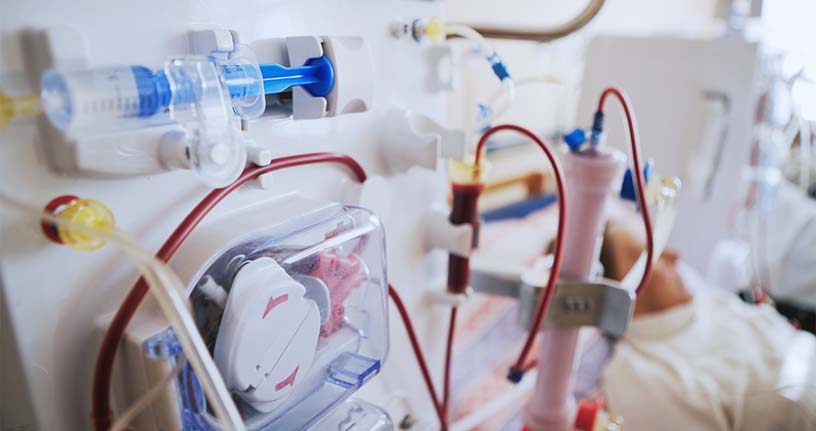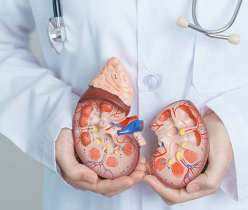Peritoneal dialysis (PD) is a treatment strategy for people dealing with kidney failure. A healthy kidney’s function is to clean wastes from the bloodstream and help eliminate extra bodily fluid. But when you have renal impairment or your kidneys are not functioning well, there is a build-up of wastes and extra fluids in your blood, causing you to be sick. This can cause trouble sleeping, nausea, weight loss, poor appetite, hiccups, swelling, loss of energy, irregular menstrual periods, muscle cramping, especially at night, trouble breathing, and anemia.
How does Peritoneal dialysis work?
Dialysis treatment is for people whose kidneys are failing or suffering from stage 3 kidney disease or stage 4 kidney disease.
Kidney failure symptoms include hypertension, nighttime urination, blood in urine, itching, puffiness, nausea, and tiredness. One should be careful of these symptoms of kidney disease when experienced.
Dialysis treatment is available to eliminate waste and extra fluid from the bloodstream when the kidneys stop functioning appropriately. PD utilizes your own Peritoneum, a natural membrane that covers all the organs in the abdomen and lines the wall of the abdomen. This membrane functions as a filter.
The Peritoneum is a sponge-like membrane that filters waste and toxins from the bloodstream. To perform this dialysis procedure, a healthcare professional must form dialysis access to the peritoneal cavity. Dialysis access is an entranceway into your abdomen that lies beneath your skin. The healthcare provider will insert a small, soft tube called a catheter to gain access. The catheter is usually about twelve inches long and as wide as a pencil. The whole procedure is usually done in a health care professional’s center. The health care specialist will give you medicine to numb the skin where the catheter is placed, and medicines are used to relax you. A catheter is kept through the abdominal wall and into the peritoneal cavity during the procedure. The catheter will travel from the peritoneal cavity under the skin to a place where it comes out of the body. The area where the catheter comes out of the body is called exist site. It takes about two to three weeks for the exit site to heal completely, but an individual who undergoes this procedure can walk around normally after surgery. But make sure you keep the dressing dry and undisturbed. Also, no showers or baths are okay until you have been advised by your healthcare professional, usually seven days after your surgery.
A portion of the catheter remains outside the abdomen and under your clothing. The catheter is joined to the dialysis fluid bags (dialysate) during the dialysis. Your doctor will tell you about a simple cleaning routine and taking care of the exit site. Taking care of the exit site regularly is critical to prevent infections. Dialysate will flow into the peritoneal tunnel through the catheter when getting a PD treatment. The solution will present in the cavity for several hours. At this time, waste products and excess fluids pass from the bloodstream into the peritoneal cavity. After the dialysis solution is in your stomach, the solution will be drained from the cavity. Then, the cavity is filled with a fresh solution, and the procedure is repeated. The procedure is referred to as an exchange.
Any surgical procedure has a risk of infection, so it is important to follow proper techniques before performing therapies. Different types of peritoneal dialysis have different exchange schedules. Some treatments are done during the day, while others can be performed overnight during sleep. Your doctor will prescribe how many exchanges you will do daily, as well as the amount and type of dialysis fluid you will use. For best results, following your healthcare professional’s instructions is important; you should also consult with him to know the best kidney dialysis cost.
Risks associated with Peritoneal dialysis
Peritonitis:
It is an infection of the peritoneal cavity. Care must be taken to prevent bacteria from entering the peritoneal cavity. Bacteria can be visible to the naked eye but are always present. Bacteria can enter via the catheter tube along the outside of the catheter, where they enter the body and leak from your bowels into the peritoneal space. To prevent infections, follow the exchange process closely and properly care for your catheter. Repeated peritonitis can decrease how well your peritoneal membrane can clean your bloodstream.
Hernia:
A hernia develops when tissue from inside the abdomen bulges through a weak spot in the abdomen. For some people receiving PD therapy, having dialysate in their belly all the time may increase the risk of getting a hernia. Hernia is more commonly reported in men than women. They occur most often in the groin region, at the belly button, and the belly button, and along a surgical line.
Fill and drain issues:
Fill and drain problems can caused by a kink or a twist in the catheter or tubing. Constipation can also give rise to drain problems. People on PD are advised to take a stool softener daily to keep their bowel movements regular.
If you choose peritoneal dialysis to treat your kidney disorder, you must perform all the exchanges as prescribed by your healthcare provider. Take proper care of your catheter. Eat foods that you have been advised to eat.



